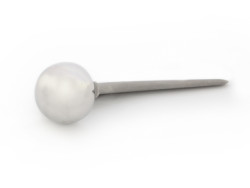Top Class Actions’s website and social media posts use affiliate links. If you make a purchase using such links, we may receive a commission, but it will not result in any additional charges to you. Please review our Affiliate Link Disclosure for more information.

Mark claims in the metal-on-metal hip implant lawsuit that the extreme side effects and possible long-lasting health ailments he’s suffered are a direct result of Stryker’s metal hip implant product.
According to the hip implant lawsuit, Mark chose to use the ABG II Modular Hip System after it was recommended to him by his physician for its apparent durability and its customization feature. After being convinced to to use the defendant’s product, Mark had the device implanted into his left hip on Jan. 23, 2012.
Initially, the plaintiff was happy with the device and experienced no initial complications. However, in a medical checkup on Jan. 2, 2015, it was reportedly discovered that there were excessive levels of chromium and cobalt in the plaintiff’s blood.
Mark was then diagnosed with metallosis, or blood-metal poisoning, and is currently receiving treatment for this condition. According to the hip implant lawsuit, the device will be removed some time this year.
Upon his diagnosis, Mark and Tammy had been unaware of any complications associated with the metal hip replacement implants. The hip implant lawsuit alleges Stryker provided no warnings or relevant studies to the plaintiffs or their physician, and allegedly took deliberate actions to conceal information regarding the complications of its metal hip implant devices.
Mark and Tammy are filing this metal on metal hip implant lawsuit against Stryker for failing to protect Mark from the complications of its device, while being aware of the possible consequences.
The metal hip implant lawsuit states that Stryker had the responsibility to warn consumers of any and all side effects of its products. Mark insists that he never would have used the ABG II Modular Hip System if he had known about the possibility of metallosis.
For being allegedly responsible for manufacturing, selling, distributing, and marketing a dangerous product, Mark and Tammy filed this metal hip replacement product lawsuit.
This Metal Hip Implant Lawsuit is filed in In Re: Stryker Rejuvenate and ABG II Hip Implant Products Liability Litigation, MDL No. 2441, in the U.S. District Court for the District of Minnesota.
Overview of Metal Hip Complications
Modern hip implants have risen dramatically in popularity since the 1970s, when the demand for the devices started increasing. Doctors and patients alike discovered that metal hip implants were longer-lasting than their ceramic and plastic counterparts, as well as more durable.
Currently, metal-on-metal hip implants still outrank the older hip implants in popularity among younger patients, because many of them are now customizable and can take more strenuous activities, like running.
Reportedly, the approval of metal-on-metal hip implants had been faster than most medical devices because it qualified under a certain policy. The FDA’s 510(k) policy allows a product to go to market, as long as it proves to work at comparable level to an already released product. This means that no preclinical testing is required, which often means any possible dangers or side effects are widely unknown, after using this approval process.
Experts state that this policy allowed for many of the undiscovered side effects of metal hip implants to wreak havoc in the patient population, with many of them indicating metallosis.
Experts explain that metallosis occurs when the ball-and-socket joining of the metal hip implants interact, which causes the ions to be shed directly into the bloodstream. This has reportedly caused numerous incidents of infection, device failure, extreme pain, and the formation of pseudotumors, in addition to metallosis.
Despite the severity of these complications, many metal hip implant manufacturers had allegedly hidden this information from the public, in order to protect the devices’ market value. This has led to a massive litigation movement against the companies, for failing to protect their consumers from the physical and financial damages of their products.
Do YOU have a legal claim? Fill out the form on this page now for a free, immediate, and confidential case evaluation. The hip implant attorneys who work with Top Class Actions will contact you if you qualify to let you know if an individual lawsuit or class action lawsuit is best for you. [In general, metal hip implant lawsuits are filed individually by each plaintiff and are not class actions.] Hurry — statutes of limitations may apply.
ATTORNEY ADVERTISING
Top Class Actions is a Proud Member of the American Bar Association
LEGAL INFORMATION IS NOT LEGAL ADVICE
Top Class Actions Legal Statement
©2008 – 2024 Top Class Actions® LLC
Various Trademarks held by their respective owners
This website is not intended for viewing or usage by European Union citizens.
Get Help – It’s Free
Join a Free Metal Hip Replacement Class Action Lawsuit Investigation
If you or a loved one had a metal-on-metal hip implant that failed or caused serious complications, you may be entitled to compensation. Hip replacement lawsuits are being filed now against multiple companies, including Stryker, Biomet, DePuy, Zimmer, and Wright. See if you qualify to take legal action by filling out the form below.
An attorney will contact you if you qualify to discuss the details of your potential case at no charge to you.
Oops! We could not locate your form.












